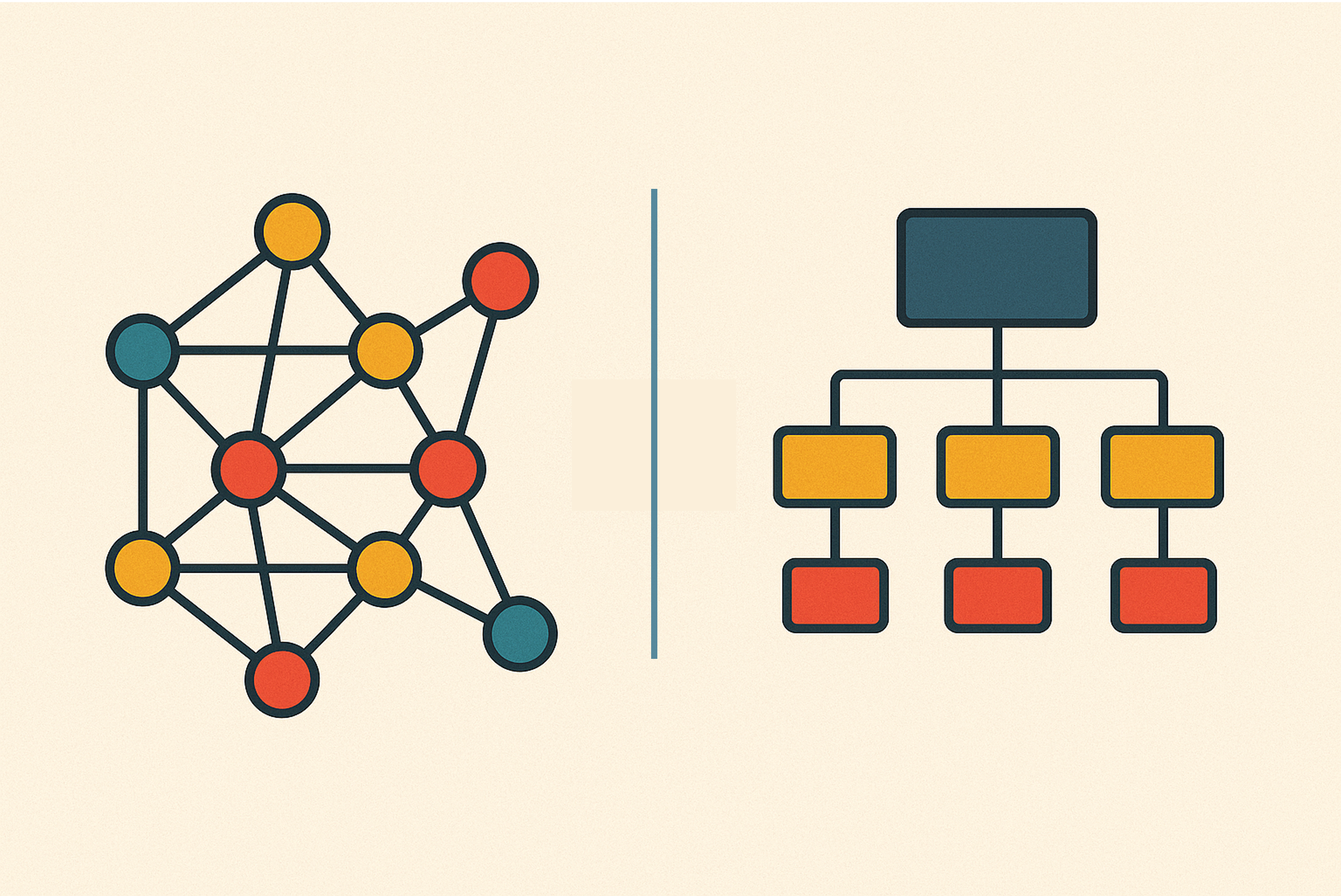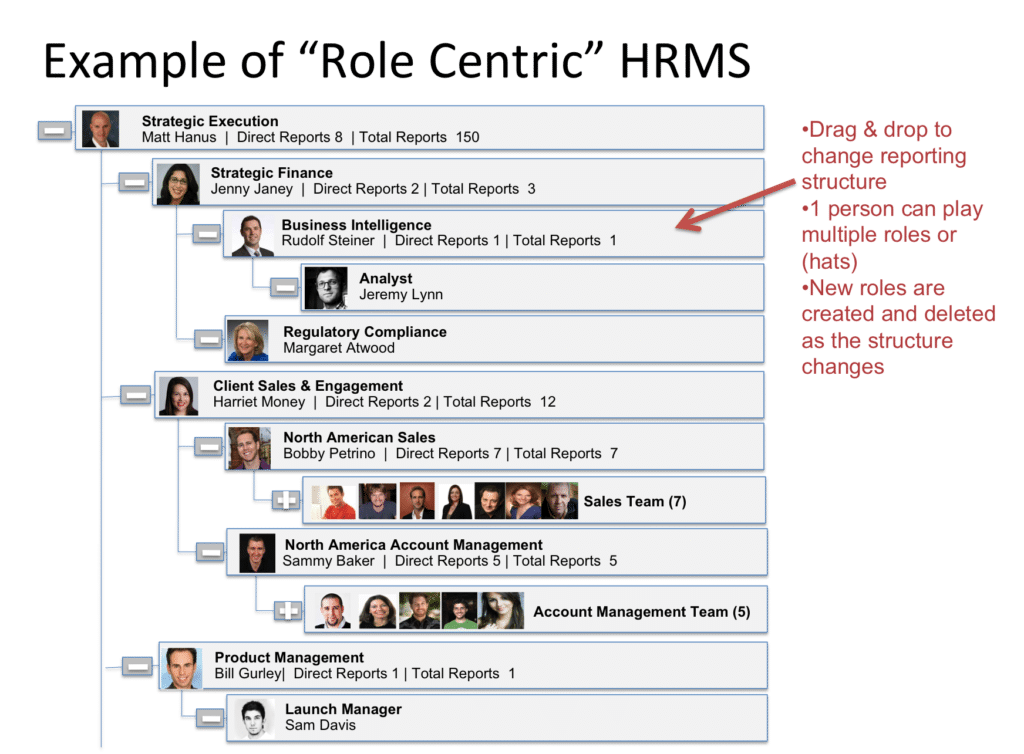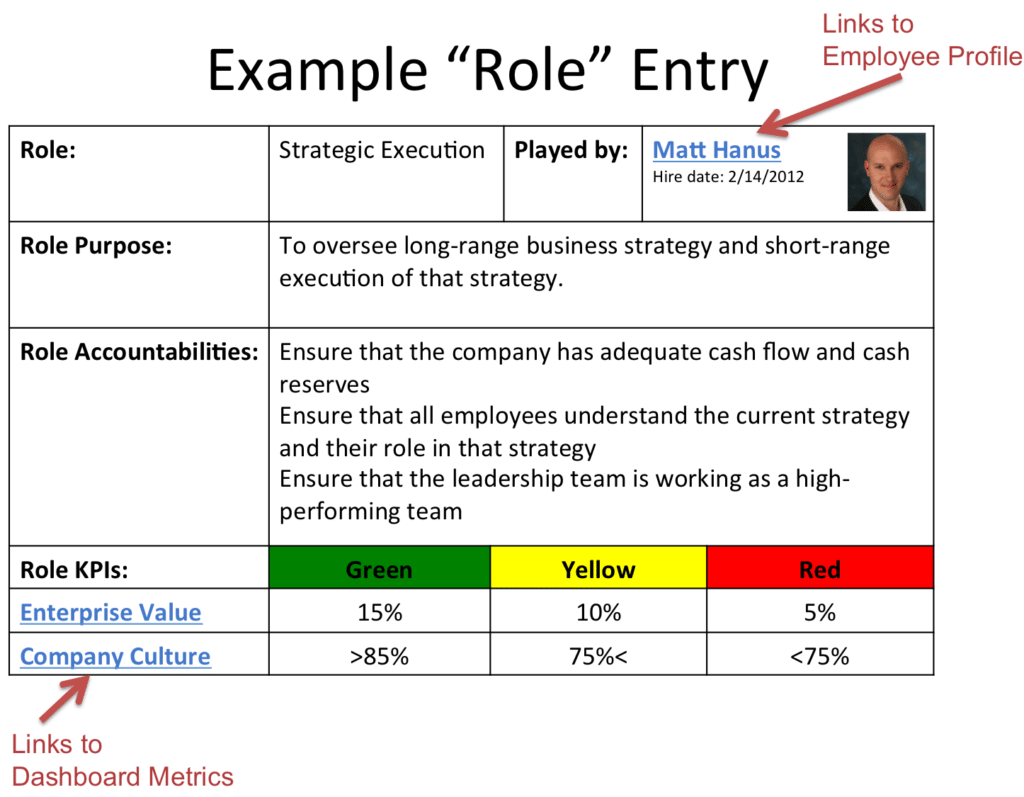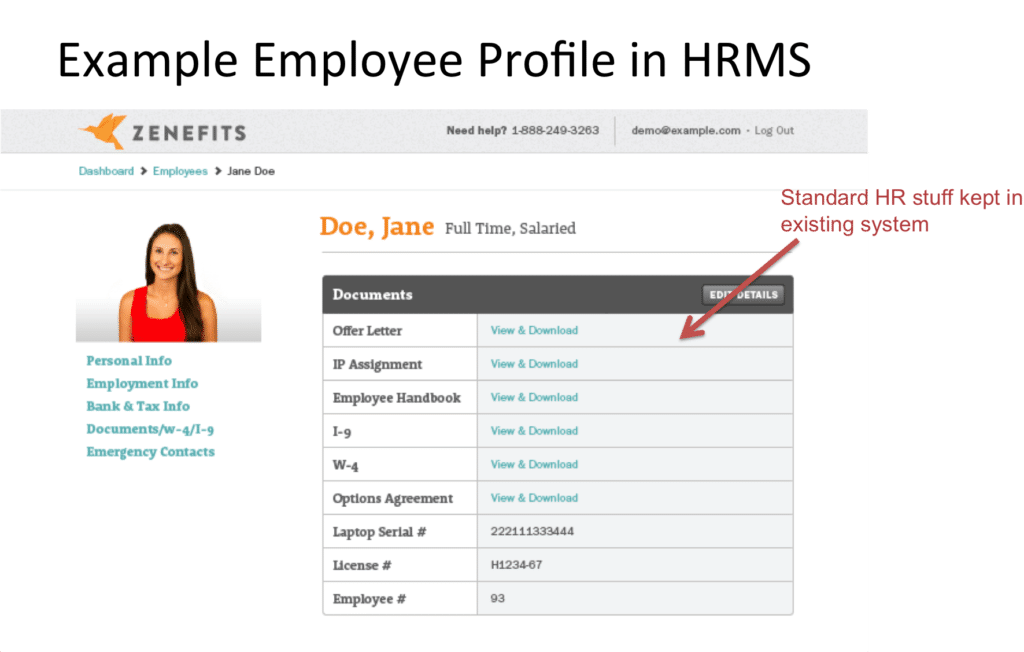Structure Drives Behavior
Summary Insight:
If you’re redesigning your org from a legacy org chart, you’re doing it backwards. Structure drives behavior—get the design right, and the rest will follow.
Key Takeaways:
- Org charts focus on people and titles; structure defines purpose, accountability, and performance.
- Good design starts with roles, not egos—then aligns the right people to the right seats.
- A role-centric HRMS turns structure into execution and culture into alignment.
“What’s the difference between an organizational structure and an organizational chart? Do you need one or the other—or both—to manage your business?” I get asked different versions of this question a lot. The distinctions are subtle but important. Knowing the answers—and approaching your organizational design the right way—is mission-critical to scaling your business.
The short answer is this. In most cases, if you’re entering a new stage for your business—scaling beyond start-up mode or embarking on a new growth strategy—you’ll need a new organizational design. And when it comes to organizational design, you really only need two things:
- A well-designed organizational structure
- A “role-centric” human resource management system (HRMS) that mirrors the structure
That’s it. You do not need a classic org chart—that constantly-changing and almost instantly-out-of-date diagram that shows names, job titles, and lines of reporting responsibilities. The org chart tends to quickly become obsolete and leads to a counterproductive focus on who’s where in the organizational pecking order…

Trying to maintain a classic org chart—or, heaven-forbid, to redesign your business based on one—causes much more harm than good. So drop the classic org chart and instead embrace the principles of effective organizational structure combined with a role-centric HRMS. Here’s what you need to know…
Are You Attempting to Redesign Your Business from an Org Chart?
It should be intuitive that, in order to manage and scale your business, you need a sound organizational design. As I’ve written in “The 5 Classic Mistakes in Organizational Structure: Or, How to Design Your Organization the Right Way,” everything has a design to it. If your business design sucks, then your execution will too.
Changing an organizational structure can be very challenging because there’s a lot of inertia tied up in the status quo. Individual perceptions of job status, internal politics, titles, compensation, and desired career paths can make changing your structure seem complicated, if not daunting. Many companies set themselves up for failure by attempting to redesign the organization from an existing org chart. When this happens, it sounds something like this…
“OK, so what if we have Sally and Mike report to Jeff, Jeff report to Ron and Ron and Helen will split reporting responsibilities? That could work. Wait.. what… Helen is leaving now? Damn. OK, how about if instead Peter takes over for Ron and Ron can head up the new product line? No, that won’t work because Ron’s ego is as big as the Grand Canyon and he’ll feel like he’s taking a step backward. Shit. This is complicated. I guess we’ll just stick with the status quo, even though we all know it’s not working well at all.”
If you ever find yourself in a conversation like this one, it’s a sure sign that you’re not thinking deeply enough about your business. You’re stuck in the past when you should actually be leaning into the future. You’ll end up making cosmetic, surface-level changes—or no changes at all—when what’s really required is deep thinking—that is, thinking deep into the structure of your organization to execute on an evolving strategy for an evolving market.
Having personally “restructured” hundreds of companies and seen them transform into lean, mean, growing machines, I want you to know that while it is challenging, restructuring is absolutely necessary if the organization is transitioning into a new lifecycle stage and/or changing its strategy. But redesigning a business doesn’t start with the org chart. It starts with creating the new organizational structure.
The Key Differences Between an Organizational Structure and an Org Chart
An organizational structure and an org chart can often appear similar on the surface, but there are some profound distinctions:
- Organizational structure is designed around the functions a business performs (e.g., sales, marketing, finance, engineering, etc.).
- An org chart is built around people and titles while structure defines the purpose, accountabilities, and key performance indicators (KPIs) for each business function and role.
- An org chart needs to be updated frequently as people come and go-it’s out of date almost the minute it’s created. Once correctly defined, a structure changes infrequently—for example, when there’s a change in strategy like a new product initiative or a move up to a new stage in the execution lifecycle.
-
Type Focus Documentation Change Frequency Organizational Structure Function-centric Purpose, accountabilities, KPIs Infrequent, changes with strategy Org Chart People-centric Titles, job descriptions, HR stuff Frequent, changes with people To repeat, you don’t need an org chart to scale your business, but you do need a well-designed organizational structure. And sure, there are key elements of a classic org chart that you’ll want to maintain in a role-centric HRMS to make the job of managing staff, budgets, and HR stuff easier. But I’ll share more on the HRMS in a bit.
How to Redesign Your Business With a New Organizational Structure
Good organizational design has some minimum requirements. Before you even start the design, you first take any consideration for people and titles off the table. You start with a blank slate and think through the functions the business must perform to succeed in its chosen growth strategy now and over time. What are those functions for your business?
In addition to supporting the chosen strategy, a good structure should (1) clarify the purpose and accountabilities of each organizational function; (2) place each major and minor function in its correct location relative to other functions by balancing effectiveness and efficiency, short range and long range, autonomy and control; (3) clarify the key performance indicators (KPIs) of each role; and (4) identify which people are accountable for performing different functional roles.
In a picture, a sound organizational design will look something like this below. And careful: it might look like an org chart at first but there are some major differences:
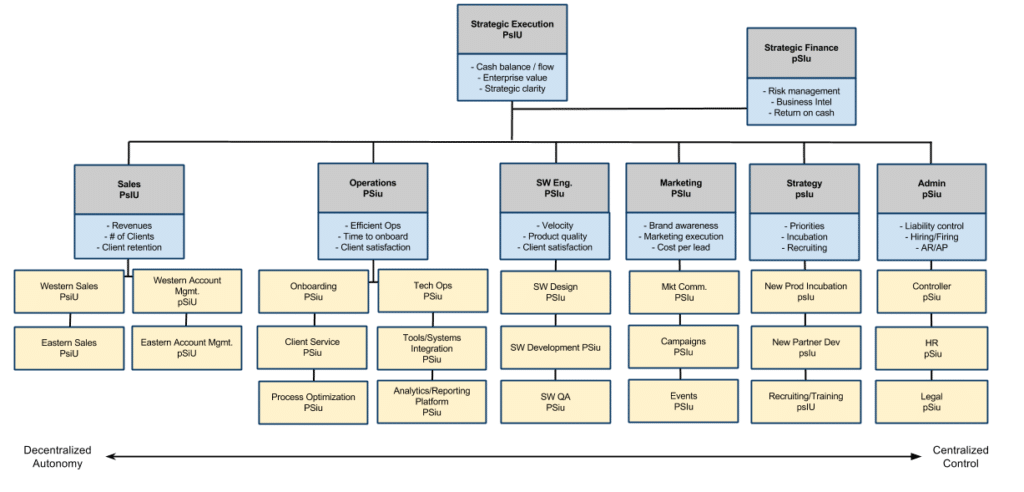
A sample structure using sound design principles. Note that every structure is unique. This structure above is a simple representation of a $15M Inc. 5000 Fastest Growing Company that I helped to redesign as part of my strategic execution coaching program.
Prior to this organizational redesign, the company had stalled out in its growth trajectory and the culture was deteriorating. The team was suffering from role confusion, unclear accountabilities, a lack of real strategic priorities, and stalled execution. Revenues and profits were flat for several years prior. Two years after the redesign, revenues were up 40% and net profits up 30%, the culture was restored, and the organization is now much easier (not to mention more a lot more fun) to manage. Much of this has to do with getting the structure right.
In the structure above, each large grey box represents the major functions of the business. The smaller beige boxes represent the primary sub-functions within those domains. The blue boxes under each major function capture some of the high-level KPIs for that functional area. Calling out the KPIs in the structure helps to bring clarity and focus to the structural discussion and ultimate adoption of new roles by the individuals involved.
Notice that I’m not using titles like “CEO” or “VP of Sales” in the structure. Instead I’m using functional descriptions like “Strategic Execution” or “Sales.” This is because job titles shift the focus to individual egos rather than the role requirements of each function. If the conversation shifts towards appeasing egos, that’s a sure sign that you’re designing the organization around people—rather than functions—and you’re setting yourself up for trouble.
Only after the design is set up correctly for the chosen strategy—again, independently of the individuals involved—should you assign accountability for each function. Note that, depending on the lifecycle stage of the business, one person might be accountable for their primary role in addition to wearing other temporary “hats.”
It doesn’t matter how many staff a given organizational function has, whether 1 or 1000+. What matters at this conceptual stage of the design is that a single person, whether as a dedicated role or wearing a temporary hat, is held accountable for the success of that area of the business. In short, you’re answering, “Who is ultimately responsible for the success or failure of this particular function?”
Also, notice that each function in the structure has a PSIU code. This shorthand code allows the company to have a shared definition of some key management requirements for each role, as well as the type of leader who is best suited to own it. It helps tremendously with hiring and creating role alignment and satisfaction among the staff. (If you’re not familiar with PSIU, I recommend that you read “The Four Styles of Management.”)
While there is an art form in facilitating a process to help the team opt into their new roles in the structure, the first step is always to create teamwide recognition and commitment to the right strategy and structural design before addressing who is will be taking on which roles and hats. If you don’t take this necessary step, the restructuring discussions will quickly devolve into a turf battle among individual egos at the expense of what’s best for the business.
Finally, one might look at the sample structure above and think “silos”. Actually, any pre-existing silos in the business disappear with the adoption of an effective team-based decision making process that creates transparency and cohesion, therefore bringing the new organizational structure to life.
In other words, creating unarguable accountability for the key organizational functions must also be matched with an information-sharing and decision-making process that creates radical transparency and rapid execution across the organization. You can read more about tying strategy, structure, and execution together in Parts III and IV of my book Organizational Physics: The Science of Growing a Business.
A Word About Hierarchy in Organizational Structure
One more thing before we move on. You may be thinking, “Wait, do we really need a hierarchy in our organizational design? That seems sort of old-fashioned. Doesn’t the new school of thinking propose a flat or hierarchy-less organizational design?” Let me address this short and sweet. Yes, your organizational design will have a hierarchy. No matter how flat, circular, or egalitarian you may want it to appear.
For instance, a poster child for “hierarchy-less” management is a methodology called Holacracy, which I’ve written about before in “An Inside Look at Holacracy”.
When you peel back the headlines of the “no boss, no title, no hierarchy” movement, what you’ll find is that these approaches absolutely have a hierarchy. There’s nothing inherently unnatural or wrong with hierarchies. They exist everywhere in both natural and man-made systems. To wit, if I was to gather together the fiercest proponents of hierarchy-less management structures, they would soon form into a new hierarchy of total believers over semi-believers.
Every effective organizational design, no matter its shape, is an attempt to clarify accountability and move the organization forward in its chosen direction with little lost time and energy in its momentum. Hierarchy is not about control; it’s about distributing accountability throughout the organization. The broader the spread of accountability, the higher “up” that role is in the hierarchy. So you can try to design an organization without hierarchy. You can also try to time travel. Let me know how it goes.
The Role-Centric HRMS
Now that you have a basic appreciation for organizational structure, it should be clear that there’s also a need for managing the people within that structure. Rather than trying to translate the structure into a classic org chart with names, titles and lines of reporting, keep the HR stuff in your human resources management system (HRMS). Keeping the HR stuff in the HRMS, while also having the HRMS mirror the design of the structure itself, allows you to have the best of both worlds.
Unlike a traditional HRMS that is title-centric, you’ll want to modify your HRMS so that it is role-centric. For instance, below is a picture of a role centric HRMS:
This HRMS creates an organizational tree that calls out the major and minor roles of the company as reflected in the structure. It shows who is playing each role and their number of direct and total reports. If one person was temporarily playing multiple roles (i.e., hats) due to budget or other reasons, their profile would show up in each of those roles. As the structure changes, people are reassigned and roles are added and deleted, as appropriate.
When you click on the name of the role, this links to the Role Entry as shown below. Any number of staff who are currently playing that role would show up in the Role Entry. Notice that the Role Entry includes the purpose, accountabilities, and top KPIs for that role.
Finally, the HRMS also maintains and updates all of the employee-/HR-specific information you need to keep, such as name, hire date, payroll information, contact info, etc.:
Having a role-centric HRMS based on the design of the structure gives you the best of both worlds. It not only allows you to manage the HR aspects of your firm, but also encourages employees to shift out of the “jobs and titles” mindset into thinking about roles, accountabilities, and KPIs. As your organization grows and develops, having this role-centric mindset creates flexibility to move people into roles where they are needed in that moment, without being so caught up in job titles and the status quo. Think “play the role to support the organization’s purpose” vs. “have a job title that describes my worth and status in the organization.”
It’s not only a structure win. It’s also a clear win for your culture.
~~~~~
To learn more about organizational design, see “The 5 Classic Mistakes in Organizational Structure: Or, How to Design Your Organization the Right Way”
